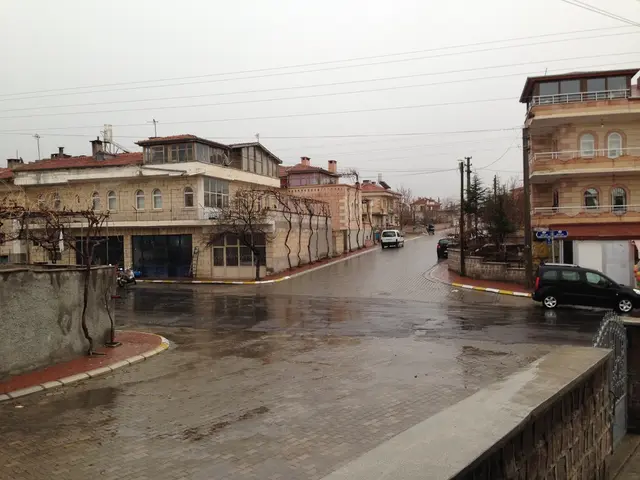Spain's Tourism Explosion: A Mixed Bag for the Nation
Tourism in Spain hit a new high during the first quarter. - Tourists flock to Spain in unprecedented quantities during the opening quarter
The first quarter of 2025 has seen Spain welcome a whopping 17 million foreign tourists, the highest number ever, marking a 5.7% increase compared to 2024 [1][2][3]. This tourism influx has brought significant economic gains, with total spending reaching an impressive €23.5 billion in Q1 2025. Each visitor dishes out an average of €1,382 per trip, a clear sign of a strategy to attract high-value tourists [4][5].
However, this boom in tourism isn’t all sunshine and roses. Locals, particularly in popular destinations like Barcelona, are feeling the heat. The surge of visitors is pushing infrastructure to its limits, resulting in overcrowding in public transportation, streets, and facilities designed for a smaller populace. This infrastructure strain directly impacts residents' daily lives and mobility [1][3].
Moreover, escalating rental prices and real estate costs driven by tourist demand and short-term rentals are forcing locals out of their neighborhoods. This housing crunch is creating social tension, as communities grapple with the transformation of their traditional fabric and the struggle to afford housing in close proximity to work and social networks [3].
To combat these problems, the Spanish government is aiming to spread tourism across the nation and throughout the year. The objective is to reduce pressure on major cities and tourist hotspots, and share economic benefits more equitably. This strategy also involves highlighting less-visited regions and encouraging extended stays in various parts of Spain to reduce overcrowding and distribute the tourism impact more sustainably [3].
In essence, while Spain’s 2025 tourism upsurge is bolstering the economy, it's simultaneously testing local infrastructures, raising housing prices, and reshaping community dynamics. The Spanish government's efforts to disperse tourists more evenly represent a crucial move to balance out tourism benefits and maintain residents' quality of life.
Related Database Entries:
- Tourism
- Spain
- Barcelona
- Housing Prices
- Airbnb
- Protests
Sources:
- Spanish news outlet, El Pais
- Official tourism statistics published by the Spanish National Statistics Institute (INE)
- European Commission report on urban tourism challenges in Europe
- Spanish news outlet, La Razon
- Market research report by EY, Outlook 2025 for Spanish Tourism
- Amid Spain's record-breaking numbers of visitors from countries like Germany, the United Kingdom, and France, the lifestyle of many locals in popular cities like Madrid and Barcelona has been notably affected, with concerns over infrastructure strain and escalating housing prices.
- The general news lately depicts a complicated situation in Spain, where the tourism explosion, while boosting the economy, is also testing the living conditions of residents due to overcrowding in certain areas and rising rental costs. The Spanish government's efforts to distributed tourists more evenly aim to address these issues and maintain a balanced quality of life for both visitors and locals.








